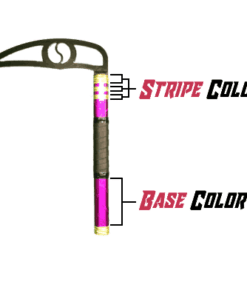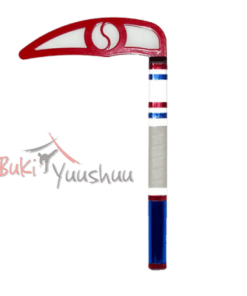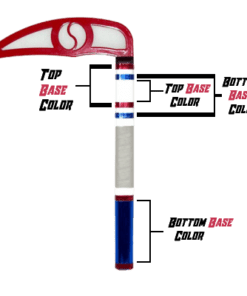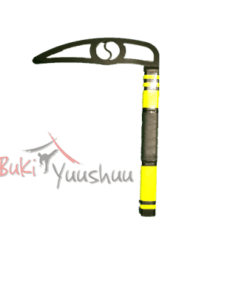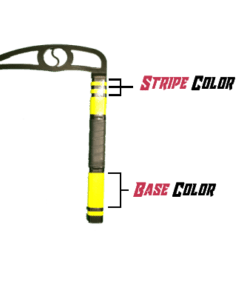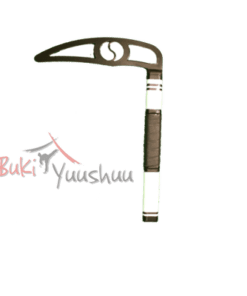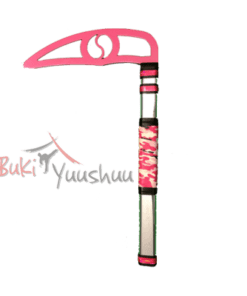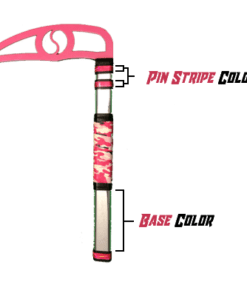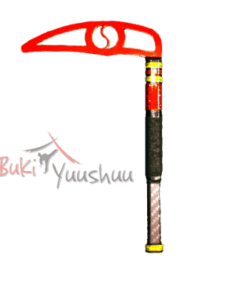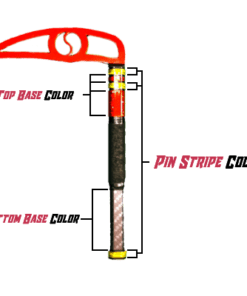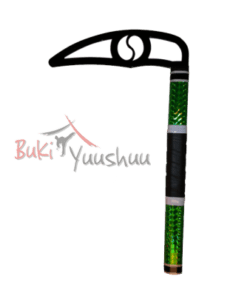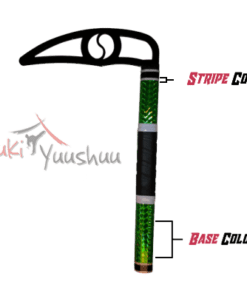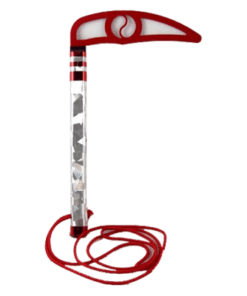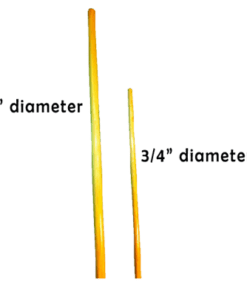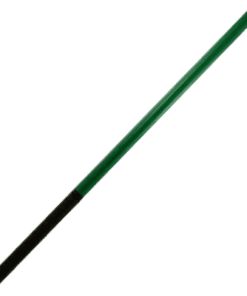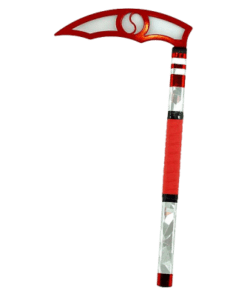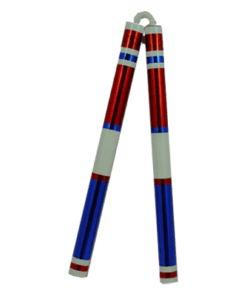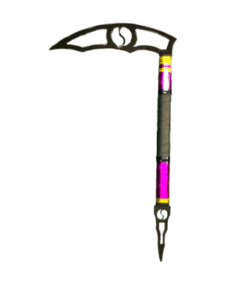Safe and Durable Children Kamas
Safe and Durable Children Kamas
FEATURED CATEGORIES
Children Kamas: A Comprehensive Guide to Understanding and Using the Traditional Japanese Sickle
Children Kamas is also known for its use of kamas as a weapon in martial arts. Kamas are a traditional Okinawan farming tool that were adapted for use as a weapon. They consist of a wooden or metal handle with a curved blade on one end. Kamas are used in a variety of martial arts styles, including karate, kobudo, and wushu. They are also used in competitions and demonstrations.
Understanding kamas and their use in martial arts requires knowledge of the different types of kamas, training techniques, and cultural significance. Kamas come in various materials, sizes, and styles, each with their own advantages and disadvantages. Training with kamas requires proper technique and safety precautions to prevent injury. Kamas have a rich history and cultural significance in various parts of the world, and understanding their place in different cultures can provide a deeper understanding of their use in martial arts.
Key Takeaways
- Kamas are a traditional Okinawan farming tool adapted for use as a weapon in martial arts.
- Understanding kamas requires knowledge of different types, training techniques, and cultural significance.

The Origin of Kamas
Kama is a traditional Japanese farming tool that is similar to a sickle or billhook used for reaping crops and also employed as a weapon. The tool originated in Okinawa, an island located in the southern part of Japan. The Kama was originally a farming implement used by farmers to cut rice, wheat, grass, and other crops. The tool was designed to be short-handled and easy to maneuver in tight spaces.
The Kama was not only used as a farming implement but was also used as a weapon. Farmers in Okinawa were not allowed to carry weapons, so they used the Kama as a self-defense tool. The tool's design made it easy to conceal and use in close combat. The Kama was also used in martial arts training, and it is often included in weapon training segments of martial arts.
The Kama's design is similar to the sickle or mini scythe, which was a simple farm implement used by farmers in Asia. The similarity between the Kama and the sickle can be attributed to the fact that the Kama started as a humble farm implement. The sickle or mini scythe was used to cut crops in Asia, and the Children Kama was a variation of this tool. The Kama's design was modified to suit the needs of farmers in Okinawa, who needed a tool that was easy to maneuver in tight spaces.
In conclusion, the Kama is a traditional Japanese farming tool that originated in Okinawa. The tool was originally used by farmers to cut crops, but it was also used as a weapon and in martial arts training. The Kama's design is similar to the sickle or mini scythe, which was a simple farm implement used by farmers in Asia. The Kama's design was modified to suit the needs of farmers in Okinawa, who needed a tool that was easy to maneuver in tight spaces.
Understanding Kamas
Kama is a traditional Okinawan farming tool that has been adapted for use as a weapon. It consists of two curved blades connected to a handle and is typically used in pairs. The blades are usually made from steel, and the handle is usually made from wood or metal. Kamas come in different sizes, and the blades can be sharpened to a razor-sharp edge.
The curved blades of the children kama are designed to be used in a slashing or chopping motion. The sharp edge of the blade can cut through a variety of materials, including wood, rope, and even flesh. The hard edge of the blade makes it an effective tool for self-defense.
Kamas are often used in martial arts, particularly in Okinawan Kobudo, which is the weapons art that is closely tied to Karate's history. In martial arts, kamas are used to perform various techniques, including blocks, strikes, and disarms. Kamas can also be used for spinning and throwing techniques.
To protect the blades and make them easier to carry, kamas are often stored in a case. The case can be made from leather or other materials and is designed to fit the shape of the blade. The case can also be used to attach the kamas to a belt or other part of the body for easy access.
In conclusion, kamas are a versatile weapon that can be used for self-defense and martial arts. The curved blades and sharpened edges make them an effective tool for cutting and slashing, while the handle provides a firm grip. Kamas are often used in pairs and can be stored in a case for protection and easy access.
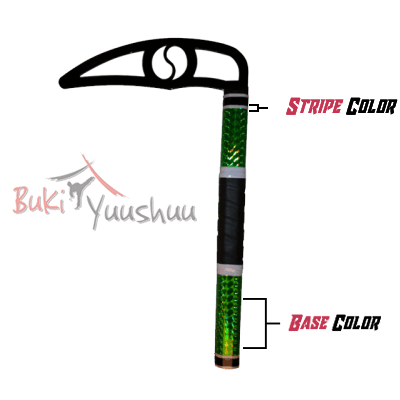
Kamas in Martial Arts
Kamas are traditional Okinawan farming tools that have been adapted for use as weapons in martial arts. They consist of a wooden or metal handle with a curved blade attached to the end. Kamas are used in various martial arts forms, including karate, taekwondo, and Okinawan karate.
In traditional Okinawan karate, kamas are used as a training tool to improve hand-eye coordination, speed, and agility. They are also used in kata, a series of choreographed movements that simulate a fight against multiple opponents. Kata kai and double kai are two examples of kata forms that incorporate the use of kamas.
In modern martial arts, kamas are used as weapons in both sparring and demonstrations. They are often used in pairs, with one kama in each hand, and can be used to block, strike, and disarm an opponent. Kamas are also used in martial arts weapons competitions, where practitioners demonstrate their skills with various weapons.
The use of kamas in martial arts requires a great deal of skill and practice. Practitioners must develop their hand-eye coordination, speed, and agility to wield the kama effectively. They must also learn proper techniques for blocking, striking, and disarming an opponent.
In conclusion, kamas are an important part of martial arts training and competition. They are used in various forms and styles of martial arts, including karate, taekwondo, and Okinawan karate. The use of kamas requires skill and practice, and practitioners must develop their hand-eye coordination, speed, and agility to wield the children kama effectively.
Training with Children Kamas
Training with Kamas requires a lot of skill and practice. Kamas are a pair of sickles that originated in Okinawa, Japan, and were later adopted by other martial arts styles. They are typically used in pairs and can be used for trapping, blocking, and striking.
When training with Kamas, it is important to start with a size that is safe and comfortable for the user. Beginners should start with foam rubber or wooden Kamas, which are less dangerous than metal ones. It is also recommended to wear protective gear, such as gloves and eye protection, to prevent injuries.
To practice with Kamas, one should start with basic techniques such as grips, strikes, and blocks. Kama strikes can be performed in different directions, including forward, backward, and sideways. Practicing these techniques regularly can help develop coordination and muscle memory.
Training weapons such as Kamas are also used in demonstrations and competitions. In these scenarios, the user should be confident and knowledgeable in their techniques. It is important to note that Kama demonstrations should only be performed by experienced martial artists, as they can be dangerous if not performed correctly.
Overall, training with Kamas can be a challenging but rewarding experience. With proper training and practice, users can develop the necessary skills to use Kamas effectively and safely.
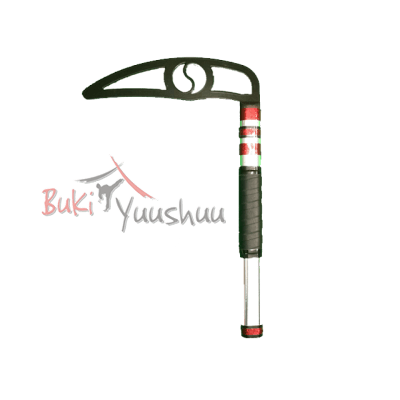
Different Types of Kamas
Kama is a traditional Japanese farming tool that has been adapted for use as a weapon in martial arts. There are various types of kamas available today, each with its own unique features and benefits. In this section, we'll explore some of the most common types of kamas and their characteristics.
ProForce® Plastic Kama
ProForce® Plastic Kama is a lightweight, one-piece molded plastic kama with vented blades. These kamas are ideal for beginners who want to practice their new techniques. They are durable, easy to handle, and have a distinctive look. The vented blades allow for better air circulation, which reduces the risk of injury during practice. These kamas are also affordable, making them a great choice for those on a budget.
ProForce® Foam Rubber Kama
ProForce® Foam Rubber Kama is another great option for beginners. These kamas are made of foam rubber, which makes them safe to use during practice. They are also lightweight and easy to handle, making them ideal for those who are just starting out. Foam rubber kamas are also affordable, making them a great choice for those who are on a budget.
Natural Hardwood Kama
Natural hardwood kamas are a popular choice among experienced martial artists. These kamas are made of solid wood, which makes them durable and long-lasting. They are also heavier than plastic or foam rubber kamas, which makes them ideal for those who want to build strength and endurance. Natural hardwood kamas can be sharpened to a point, which makes them a deadly weapon in the hands of a skilled martial artist.
Foam Rubber Kama
Foam rubber kamas are a great choice for those who want to practice their techniques without the risk of injury. These kamas are made of foam rubber, which makes them safe to use during practice. They are also lightweight and easy to handle, making them ideal for beginners. Foam rubber kamas are also affordable, making them a great choice for those who are on a budget.
Unsharpened Kama
Unsharpened kamas are a popular choice among martial artists who want to practice their techniques without the risk of injury. These kamas are not sharpened, which makes them safe to use during practice. They are also lightweight and easy to handle, making them ideal for beginners. Unsharpened kamas are also affordable, making them a great choice for those who are on a budget.
Flat Kama
Flat kamas are another popular choice among martial artists. These kamas have a flat blade, which makes them ideal for striking and blocking. They are also lightweight and easy to handle, making them ideal for beginners. Flat kamas are also affordable, making them a great choice for those who are on a budget.
Vented Kama
Vented kamas have a unique design that allows for better air circulation during practice. This reduces the risk of injury and makes them a great choice for beginners. They are also lightweight and easy to handle, making them ideal for those who are just starting out. Vented kamas are also affordable, making them a great choice for those who are on a budget.
Lightweight Kama
Lightweight kamas are a great choice for those who want to build strength and endurance. These kamas are made of lightweight materials, which makes them easy to handle and ideal for those who want to practice for extended periods of time. Lightweight kamas are also affordable, making them a great choice for those who are on a budget.
In conclusion, there are various types of kamas available today, each with its own unique features and benefits. Whether you're a beginner or an experienced martial artist, there is a kama that will meet your needs. Choose the right kama for your skill level and budget, and you'll be on your way to mastering this deadly weapon.

Kamas in Competitions
Kamas have been used in martial arts competitions for centuries. The weapon is particularly popular in Okinawan Karate, Taekwondo, and Silat. Competitions involving kamas are often focused on forms and sparring.
In competitions, martial artists use kamas to showcase their skills and techniques. They are judged on their ability to use the weapon effectively and creatively. Competitors are expected to demonstrate their proficiency in using the kama in both defensive and offensive situations.
To compete in kama competitions, martial artists use competition kamas. These are specially designed kamas that are made for serious martial artists who are ready for competition, forms, and sparring. Many of these models feature an aluminum blade and a wooden handle.
When choosing competition kamas, martial artists should consider the weight, balance, and grip of the weapon. The kama should feel comfortable in the hand and be easy to maneuver. The blade should be sharp and durable, and the handle should provide a secure grip.
In conclusion, kamas are an important part of martial arts competitions, and competition kamas are specially designed to help martial artists showcase their skills and techniques. When choosing competition kamas, martial artists should consider the weight, balance, and grip of the weapon to ensure that they can use it effectively and creatively in competitions.
Kamas in Different Cultures
Kamas have been used in various cultures throughout history. While they are commonly associated with Okinawa and Japan, they have also been used in other parts of Asia, such as the Philippines, Malaysia, and Indonesia.
In Okinawa, kamas were originally used as farming tools. They were used to cut crops and were also used as weapons in case of an attack. Over time, the use of kamas as weapons became more refined, and they were eventually incorporated into the martial art of te. Today, kamas are still used in Okinawan martial arts, such as kobudo, and are also used in some forms of karate.
In the Philippines, kamas are known as "kamagong" and are made of a dense, heavy wood. They are used in the martial art of arnis, which is also known as kali or escrima. In arnis, kamas are used in a similar way to how they are used in Okinawan martial arts, as both a weapon and a tool for cutting.
In Malaysia, kamas are known as "parang tumpul" and are used by the indigenous people of Sabah and Sarawak. They are used in a similar way to how they are used in the Philippines and Okinawa, as both a tool and a weapon.
In Indonesia, kamas are known as "cangkul" and are used as farming tools. They are also used as weapons in some forms of martial arts, such as pencak silat.
Overall, kamas have a long and varied history in different cultures throughout Asia. While they were originally used as farming tools, they eventually became incorporated into various martial arts and are still used today in both traditional and modern contexts.
Kamas and Other Weapons
Kama is a traditional Japanese farming tool that has been used as a weapon for centuries. It is similar to a sickle or a billhook and is often included in weapon training segments of martial arts. The kama has a curved blade that is sharpened on the inside edge and is attached to a wooden handle. It can be used to cut through crops, weeds, and even flesh.
The kama has similarities to other weapons such as the sickle and the scythe. However, the kama has a shorter blade and is designed to be used with one hand. The sickle and scythe, on the other hand, have longer blades and require the use of both hands. The kama is also similar to the ute, which is a Philippine weapon that is used in a similar way.
Samurai swords are another type of weapon that is often associated with Japan. These swords are longer and more elegant than the kama and are used in a completely different way. Samurai swords are designed for cutting and thrusting, whereas the kama is used for hacking and slashing.
The kusarigama is another weapon that is used in Japanese martial arts. It consists of a sickle attached to a length of chain, which is in turn attached to a weight. The kusarigama is a difficult weapon to master, but it can be very effective in close combat.
In addition to these weapons, there are many other martial arts weapons that are used in different parts of the world. Some of these include the staff, which is a long wooden pole that can be used for striking or blocking, and the nunchaku, which is a pair of short sticks connected by a chain or rope.
Overall, the kama is a unique weapon that has been used for both farming and combat in Japanese culture. While it has similarities to other weapons such as the sickle and scythe, it has its own distinct design and purpose. Martial artists who train with the kama must learn to use its curved blade to their advantage, and they must also be aware of the other weapons that are used in their art.
Buying and Storing Kamas
Kamas are the primary currency used in the online game Dofus. Players can use Kamas to buy items, services, and subscriptions in the game. In this section, we will discuss how to buy and store Kamas.
Buying Kamas
Players can buy Kamas in different ways. One way is to use the Kama Exchange, a system provided by Ankama that allows players to buy and sell Kamas. The Kama Exchange is the only 100% secure service that allows players to buy Kamas legally. Players can access the Kama Exchange via the website or from the game itself by clicking on the Browser/Ogrines button in the menu bar.
To buy Kamas using Ogrines, players need to go to the Kama and Ogrines Exchange (KOE). They can then select the server their character plays on and follow the instructions to make the purchase. Players can also buy Kamas from third-party websites, but they should be careful as this is against the game's terms of service and can result in a ban.
Storing Kamas
Players can store their Kamas in different ways. One way is to use the in-game store, which allows players to buy items that increase their inventory space. Another way is to use a Kama case, which is a protective case that securely holds Kamas. Players can buy Kama cases made of different materials, such as vinyl or leather, and can choose from different sizes to fit their needs.
Players can also use a wrist strap, backpack, or gear bag to store their Kamas. A wrist strap is a simple and convenient way to carry Kamas around. A backpack or gear bag is a more spacious option that can also hold other items, such as weapons or potions. Players should choose a storage option that suits their playstyle and needs.
In conclusion, buying and storing Kamas is an essential part of playing Dofus. Players should use the Kama Exchange or the in-game store to buy Kamas legally and store them in a protective case or a convenient storage option.
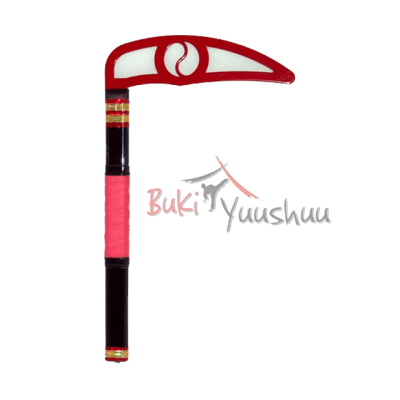
Frequently Asked Questions
What are Kamas used for in martial arts?
Kamas are traditional Okinawan weapons that have been used for centuries in martial arts. They are primarily used for cutting and slashing movements, and are often used in pairs. Kamas can also be used for blocking and trapping techniques.
What is the difference between Kamas and other weapons used in martial arts?
The main difference between Kamas and other weapons used in martial arts is their unique design. Kamas have a curved blade that is attached to a wooden handle, which allows for a wide range of movements. Other weapons, such as swords and nunchucks, have a more limited range of motion.
What are some techniques for using Kamas in self-defense?
When using Kamas in self-defense, it is important to focus on quick, precise movements. Some common techniques include using the Kama to block incoming attacks, and using the curved blade to disarm an opponent. It is also important to use footwork to maintain distance and avoid being caught off guard.
Where can I purchase high-quality Kamas for martial arts training?
There are many online retailers that sell high-quality Kamas for martial arts training. It is important to do research and read reviews before making a purchase to ensure that the Kamas are made from durable materials and are suitable for your skill level.
What are some common mistakes to avoid when using Kamas?
One common mistake when using Kamas is holding them too tightly, which can lead to fatigue and decreased accuracy. It is also important to avoid using Kamas in close quarters, as the curved blade can be difficult to control in tight spaces. Additionally, it is important to always wear protective gear when training with Kamas to avoid injury.
How do I properly care for and maintain my Kamas?
To properly care for and maintain Kamas, it is important to keep them clean and dry after each use. It is also important to periodically oil the blades to prevent rust and corrosion. When not in use, Kamas should be stored in a cool, dry place to prevent damage.
Contact Us Today!
Website: https://bukiyuushuu.net/
Phone Number: +1 (860) 415-4166
Email: [email protected]
Address: 300 Taugwonk Rd, Stonington, CT 06378


